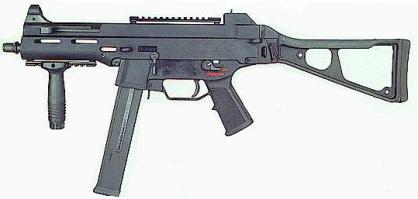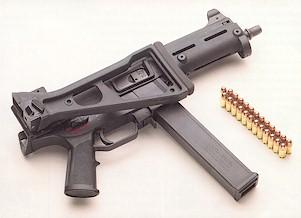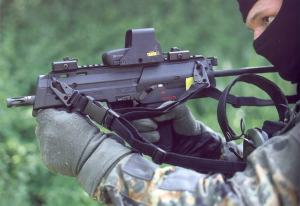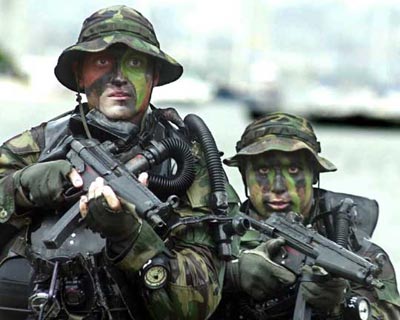German Bundeswehr Tribute
June 11, 2009
New design n features!
March 18, 2009
I added a new design hope u like it.
In the navigation are also 4 new pages… Assault rifles, Handguns, Sniper rifles and Submachine guns.
Check it out!
Close Combat in IRAQ
March 4, 2009
Belgian ParaCommando’s
March 4, 2009
During the Second World War parachutist and commando units were founded in Great Britain. In 1952 the parachutist and commando units were brought together in a Para-Commando Regiment. Later an antitank company, a field artillery battery and a reconnaissance squadron were added. In November 1991 the Para-Commando Regiment became a brigade by adding new support units.
Missions
The Para-Commando Brigade operates closely with the 15th Transportation Wing of the Belgian Air Force and has a high level of operational readiness. The brigade can be put into action at very short notice and is therefore well suited to form intervention units. The Para-Commando Brigade is one of the Belgian contributions to NATO and is prepared to participate both in the Immediate and Rapid Reaction Force. From December 1992 to November 1993 the Brigade took part in UN peace support operations. Besides de defence of the Belgian territory the Brigade is also charged with the execution of operations to protect or evacuate our citizens abroad.
Training and exercises
All candidates to serve with the Brigade are volunteers. The are subjected to a thorough medical examination and follow, no matter what rank or Branch, a five month course at the Commando Training Centre of Marche-les-Dames before attending the one month parachutist course at the Parachutist Training Centre of Schaffen. At the end of this training, the candidates are fully qualified Para-Commandos. They then join their units where they carry on with their specialized and collective training. It is continuous up to brigade level and includes the different methods of brigade deployment: parachuting, assault landing, air and helicopter transportation,… This unit training is based on a three-year cycle, although some of it occurs in yearly activities, for instance specific para-commando exercises. These exercises are held in Belgium as well as abroad.
Air Force Special Ops – Combat Control
March 4, 2009
One of the most overlooked Special Operations branches in the United States Armed Forces is the Spec Ops Community within the Air Force. And that’s a shame too because there are some awesome warriors in their ranks. This promotional video showing the Air Force’s Combat Controllers at work is amazing to watch.
1er régiment d’infanterie Combat Movie
March 4, 2009
Heckler-Koch HK UMP
December 4, 2008
Caliber: .45ACP, .40SW and 9x19mm Luger/Para
Weight: 2.1 – 2.2 kg empty
Lenght (stock closed/open): 450 / 600 mm
Barrel lenght: 200 mm
Rate of fire: 600 – 700 rounds per minute
Magazine capacity: 10, 25, 30 rounds
Effective range: 100 meters
The UMP (Universal Machinen-Pistole = Universal Submachine Gun) had been developed by the Heckler & Koch company of Germany in the mid- to late- 1990s and first appeared on the markets in 1999. The key idea behind the UMP was to ceate lightweight and powerful submachine gun, that also will be cheaper than one of the J&K’s flagships, the MP-5. UMP, being targeted primary for USA law enforcement market, first appeared in .45ACP and .40SW chamberings, and later – in 9mm.
The UMP is a blowback-operated select-fire submachine gun, being fired from the closed bolt. The receiver is made from the polymer, the controls are fully ambidextrous. UMP can be fired in full-auto, in single shots, and in 2 or 3 round bursts (optional). UMP also has bolt hold-open device, which traps the bolt in the open position when the last round from magazine had been fired. UMP has side-folding buttstock and two set of picatinny rails – one on the top of the receiver, and the other – on the forend. These rails can accept wide variety of sighting and other equipment, such as red-dot sights, laser pointers, tactical grips and flashlights. The barrel has quick mount for snap-on silencer.
Heckler – Koch HK MP7
October 24, 2008
Caliber: 4.6x30mm HK
Weight: 1.5 kg empty
Length (stock closed/open): 340 / 540 mm
Barrel length: 180 mm
Rate of fire: 950 rounds per minute
Magazine capacity: 20 or 40 rounds
Effective range: 150-200 meters
HK MP7A1
The HK MP7 Personal Defense Weapon (PDW) is a member of a relatively new class of small arms, called Personal Defense Weapons (PDW; such specialized weapons are build since the start of WW2). The PDW are intended, as name implies, to be a defensive sidearm for second-line troops, vehicle crews and other military personnel who normally not issued with assault rifles. Previously, these troops were issued with pistols or submachine guns, but proliferation of body armor in recent years made those guns ineffective. The first firearm, intended as “the new age PDW” and offered in that class was Belgian-made FN P90, and it had special low-impulse, high-velocity ammunition, capable of penetration of current military body armor and helmets at ranges of 100 meters and beyond, while being much smaller and lighter, than assault rifle. The HK MP7, originally known simply as HK PDW, is another entry in the PDW class, and thus is a direct rival to FN P90.
The HK MP7, first announced in 2000, entered production in 2001 and, by early 2007, is officially adopted by German military, as well as some German special police units, such as KSK, and also offered for export sales. The British Military Police issues HK MP7A1 to its personnel since 2005, and it is believed that some South Korean special forces also use MP7A1.
ksk with mp7
The HK MP7 submachine gun / personal defense weapon has layout of a typical compact submachine gun (or a large pistol), with magazine being inserted into pistol grip, with folding forward grip and telescoped buttstock. The action of the MP7A1 is somewhat unusual for weapon of such small size, since it is gas operated, rotating bolt design, which strongly resembles the action of the HK G36 assault rifle, suitably scaled down. The ambidextrous fire mode selector/safety switch allows for semi-auto and full-auto modes. MP7A1 it designed to fire special, high velocity ammunition, 4.6x30mm, that looks like scaled down rifle round. That ammunition is unique to the MP7 and another HK weapon, the HK UCP / P46 pistol.
The receiver of MP7A1, along with integral pistol grip, is made from the polymer with steel reinforcements. Top side of the receiver hosts a Picatinny-type accessory rail for sight mountings. Standard sighting equipment is usually a set of low-profile open sights on quick-detachable mounts, plus a collimating (red-dot) sight Additional rails can be installed on either side of receiver, next to its front end. The MP7A1 could be fired single-handedly, or using both hands, either like the pistol or using a front grip. Telescopic buttstock can be extended to give additional stability. With buttstock and front grip are collapsed, the MP7 can be carried like any big pistol in the special holster, and can be effectively used in close combat.
The 4.6x30mm ammunition is loaded with pointed all-steel bullets with brass jacket. Bullet weight is 1.6 gram (25 grains) and the muzzle velocity is 725 m/s (ca. 2400 fps). Manufacturer claims the 100% penetration of the CRISAT body armor (1.6mm of Titanium plus 20 layers of Kevlar) at the distance of 200 meters. Other types of ammunition, including tracer, frangible, spoon-tip (rapid-tumbling for use against unarmored human targets), blank and trill (inert) also available for MP7A1; ammunition is currently manufactured in UK by BAE Systems / Radway Green plant.
different type of ammo
Heckler und Koch MP-5 (Germany)
July 4, 2008
| MP-5A2 | MP-5A3 | |
| Caliber | 9x19mm Parabellum (also .40S&W and 10mm Auto) | |
| Weight, empty | 2.54 kg | 2.88 kg |
| Length | 680 mm | 490 / 660 mm |
| Barrel length | 225 mm | |
| Rate of fire | 800 rounds per minute | |
| Magazines | 15 and 30 rounds | |

HK MP-5A2 with fixed stock and plastic S-E-F trigger group.
The Heckler und Koch submachine gun, MP-5, is one of the most famous and wide-spread firearms of its class, developed since the Second World War. Its development began circa 1964 under the company designation HK MP-54, or simply HK 54. In the 1966, German police and Border Guard adopted the HK 54 as the MP-5, and it was originally available in two forms – MP-5 with fixed buttstock and MP-5A1 with retractable buttstock. Some years later HK slightly upgraded the design of MP-5, replacing the sights (from flip-up open notch rear and blade front to drum-type diopter rear and hooded post front) and the muzzle (replacing the two-slot muzzle compensator to the tree-lugs QD silencer mount without compensator). Other improvements made over the time concerned the magazines (early type magazines were of straight box type, latter – of curved box type for improved reliability). The trigger units also were upgraded – from original stamped steel with plastic grip to the all-plastic units, integral with grip, and with various fire modes and marking. Over the years MP-5 were adopted by the huge numbers of police, security and military forces around the world, including the German police and border guard, British police and elite Army SAS units, American police, FBI, Navy and Marine Corps, and many, many others. MP-5 is still manufactured in Germany by the HK itself, and also licensed to Greece, Iran, Pakistan and Mexico. The only real rival to the MP-5 in the terms of proliferation across the world is the famous Israeli UZI submachine gun. Most interestingly, the German Army (Bundeswehr) did not adopted the MP-5, most probably due to the economical reasons, and turned instead to the… UZI submachine guns, made under license in Belgium.
The success of the MP-5 is outstanding. It is based on the high quality and reliability of the gun, great single-shot accuracy (thanks to its closed bolt action), great flexibility and, of cause, good marketing. It seems that no other modern SMG at this time can rival the MP-5 in popularity (UZI is not manufactured anymore).

HK MP-5N. Modern version developed for US Navy. Features plastic trigger group of latest design, with ambidextrous selector lever and “icon” markings. Barrel is threaded to accept US-made detachable silencers, in addition to HK standard three-lug mounts. Retractable buttstock of A3 configuration.
The MP-5, basically, is no more than the scaled-down version of the Heckler-Koch G3 battle rifle. It shares the same basic design with stamped steel receiver and the same roller-delayed blowback action, derived from the post-war CETME rifles. The trigger units are hinged to the receiver and are now available with various fire mode options, including 2 (Safe, Semi-auto), 3 (Safe, Semi, Full Auto) or 4 (Safe, Semi, Limited burst of 2 or 3 rounds, Full auto) position levers, ambidextrous or not, and marked with letters, digits or icons. The MP-5 is always fired from closed bolt for improved accuracy, but this limits the amount of sustained fire due to the barrel overheating and resulting cook-off problems. To avoid this, MP-5 cocking handle could be locked in the rear position in the special slot, leaving the bolt in the open position, with no cartridge in the chamber. To commence the fire one must simply release the cocking handle from its notch and then pull the trigger. Modern MP-5 submachine guns are equipped with three-lug quick detachable silencer mounts on the barrel. Sights are similar to other HK models, and consists of the front hooded post sight and the adjustable for windage and elevation drum-type diopter rear sight. Special quick-detachable clamp mounts allows for installation of night, optical and red-dot sights if required. Standard magazine capacity is 30 rounds, but shorter 15 rounds magazines are available. Special versions were developed and manufactured in limited numbers during 1980s-90s for the US Law Enforcement market, chambered for more powerful 10mm Auto (10x25mm) and .40S&W (10x22mm) ammunition. These guns can be easily distinguished from more common 9mm models by straight box 30 rounds magazines, made from plastic.
Navy Seals with MP5N
While all of MP-5 can be fitted with silencers, there also a dedicated silenced version of MP-5, called MP5SD2 or SD3 (depending on the stock type). This version is equipped with non detachable integral silencer, and the vented barrel, to reduce the bullet muzzle velocity down below the speed of sound. The MP-5SD is intended to fire standard 9mm ammunition, not the special subsonic one.
Semi-automatic only versions of the MP-5 were once made for civilian market under the designation of HK-94, some with longer, 16 inch (406 mm) barrels, to conform with US laws. There also is an US company, called Special Weapons LLC, that is manufacturing semi-automatic, civilian MP-5 clones in various pistol calibers, including the .45ACP.

Visual difference between trigger units:
left -earliest type stamped steel with plastic grip (converted from semi-auto only civilian gun HK 94, with American markings on selector);
middle – early type all-plastic with S-E-F markings;
right – most modern all-plastic design of “A4” variation, with additional 3-rounds burst facility and icon markings.








